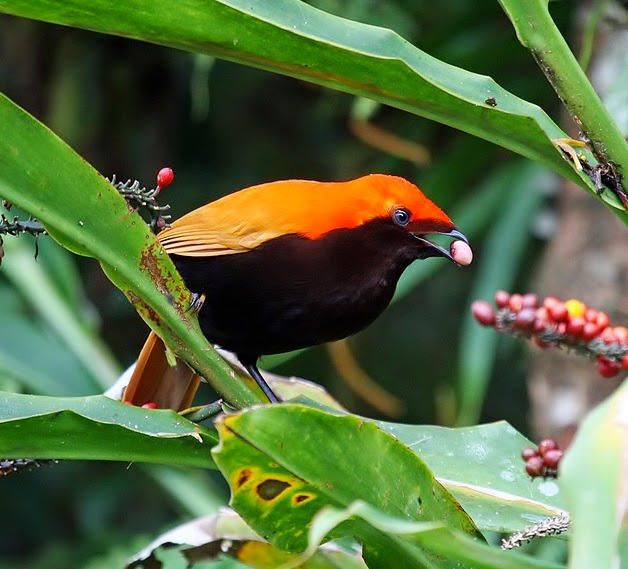 |
| (Photo from Astronomy to Zoology) |
Common name:
crested bird-of-paradise (en); ave-do-paraíso-de-poupa (pt); cnémophile huppé (fr); ave-del-paraíso crestada (es); furchenparadiesvogel (de)
Taxonomy:
Order Passeriformes
Family Paradisaeidae
Range:
This species is endemic to the mountain of New Guinea, being found from the easternmost mountains of Indonesia to the mountains east of Port Moresby in south-eastern Papua-New Guinea.
Size:
These birds are 24 cm long and weigh 80-120 g.
Habitat:
The crested bird-of-paradise in upper mountain and sub-alpine tropical forests, as well as along forest edges and in nearby scrublands. They also use secondary and disturbed forests. This species occurs at altitudes of 2.600-3.500 m.
Diet:
They are strictly frugivorous, mainly taking simple drupes or berries that are swallowed whole.
Breeding:
Crested birds-of-paradise breed in August-January. They are polygynous with males displaying to attract females and having no further part in the reproduction process after mating. The female builds the nest alone, a globular structure made of sticks, green mosses and green fern fronds, and lined with green-yellow epiphytic orchid stems. The nest is placed on a decayed tree stump, or within the branches of a tree, 2-4 m above the ground. There she lays a single egg which she incubates alone for about 3 weeks. The chicks are raised by the female alone and fledge about 5 weeks after hatching.
Conservation:IUCN status – LC (Least Concern)
This species has a relatively large breeding range. Its secretive habits limit meaningful assessment of abundance, but the crested bird-of-paradise is reported to be common wherever researchers have mist-netted in its habitat.







